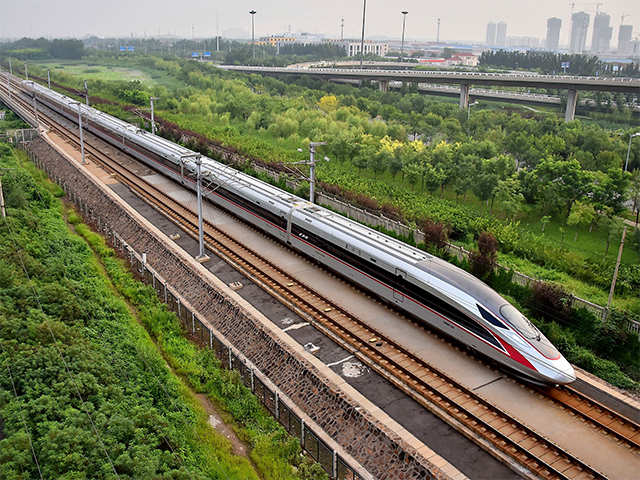The High-Speed Bullet Trains
Are you tired of long and exhausting train rides? Do you wish to travel across the country in a matter of hours? Then you must try the high-speed bullet trains! These sleek and fast trains are the future of transportation and are rapidly changing the way we travel.
The term "bullet train" refers to a high-speed train that travels at a speed of more than 200 km/h (124 mph). These trains use advanced technology to operate smoothly and efficiently, making them the fastest and most comfortable mode of transportation.
The first-ever bullet train was introduced in Japan in 1964, called the Shinkansen. Since then, several countries have adopted this technology, and bullet trains can now be found in many parts of the world, including Europe, Asia, and the Middle East.
The Benefits of Bullet Trains
Speed
One of the primary advantages of bullet trains is speed. These trains can travel at a speed of up to 320 km/h (200 mph), which is significantly faster than traditional trains. This means that you can reach your destination much quicker and save a lot of time.
Comfort
Bullet trains are designed with passenger comfort in mind. The seats are spacious and comfortable, and there is plenty of legroom. The cabins are also equipped with air conditioning, so you can travel in comfort, even on hot summer days.
Safety
Bullet trains are extremely safe. They are built with advanced technology and undergo strict safety checks before every journey. Additionally, the tracks are designed to minimize the risk of derailment, and the cabins are equipped with emergency systems to ensure passenger safety.
Environmental-Friendly
Bullet trains are also an environmentally-friendly mode of transportation. They produce fewer emissions than planes or cars, making them a more sustainable option for long-distance travel.
The Technology behind Bullet Trains
Bullet trains use advanced technology to operate efficiently and safely. These trains are equipped with several features, including:
Electric Power
Bullet trains are powered by electricity. They use an overhead power system, similar to that used by trams and electric buses. This system allows them to operate quietly and with minimal emissions.
Magnetic Levitation
Some bullet trains, such as the Maglev, use magnetic levitation to operate. This technology uses magnets to lift the train off the tracks, reducing friction and allowing the train to travel at high speeds.
Advanced Braking Systems
Bullet trains use advanced braking systems to ensure passenger safety. These systems can bring the train to a stop quickly and safely in the event of an emergency.
How Bullet Trains are Changing the Way We Travel
Bullet trains are rapidly changing the way we travel. They offer several benefits over traditional modes of transportation, including:
Reduced Travel Time
Bullet trains allow passengers to travel across the country in a matter of hours, significantly reducing travel time. This means that people can travel further and see more of the world, without spending days or even weeks on the road.
Increased Accessibility
Bullet trains make travel more accessible. They connect remote areas to major cities, making it easier for people to travel to and from these areas. This increased accessibility can help boost local economies and promote tourism.
Reduced Traffic
Bullet trains can help reduce traffic congestion on highways and in airports. By offering a faster and more efficient mode of transportation, they can encourage people to leave their cars at home and opt for public transportation instead.
In conclusion, bullet trains are the future of transportation. They offer several benefits over traditional modes of transportation, including speed, comfort, safety, and sustainability. They use advanced technology to operate efficiently and are rapidly changing the way we travel.
If you have never traveled on a bullet train before, now is the time to try it out. You won't be disappointed!
Labels: Interesting, science, Technology


0 Comments:
Post a Comment
Subscribe to Post Comments [Atom]
<< Home